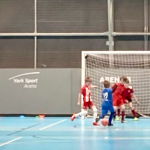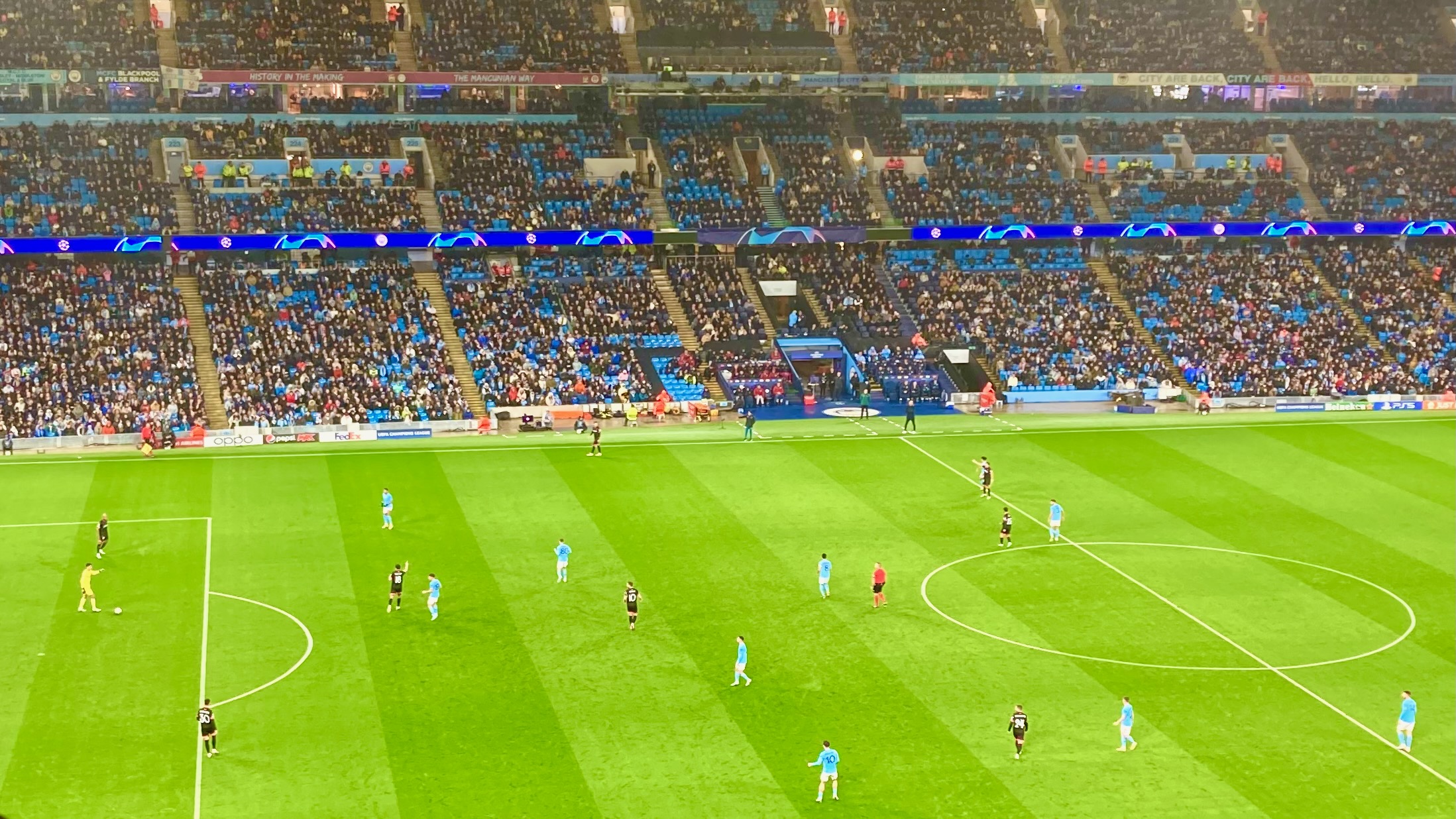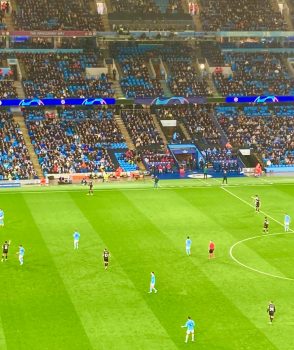Forget tiki-taka: Manchester City’s players are tactically versatile. They can play in many shapes and styles and change their approach at will. Your youth football team can too, with these 5 principles.
Pep Guardiola’s Barcelona team was known for “tiki-taka”. Since leaving Barça Guardiola has distanced himself from tiki-taka, though. His latest Manchester City side has, in some ways, been its complete antithesis. More; they can play in a variety of styles as each situation demands. Their burgeoning trophy cabinet illustrates the merits of Pep’s tactical approach. And it demonstrates why aiming to develop an ability to play in different styles and different systems is one of my goals as a football coach.
What was tiki-taka?
Some people loved tiki-taka (or tiquitaca), a possession-based way of playing football involving long passages of short passing in midfield. They praised the way it demanded constant movement, intelligence and high technical skill levels. Others hated it, saying it essentially bored opposing teams into submission and didn’t create enough chances to sustain interest in the game.
What wasn’t in doubt was that it was successful at the game’s highest level. Barça won two Champions Leagues under Pep playing “tiki-taka”. Spain won two European Championships and the 2010 World Cup with similar personnel.
When tiki-taka took over the world
The Spanish national team first brought tiki-taka to prominence. That Barcelona did so as well is perhaps not surprising. Both sides were built on a core of midfielders who had come through La Masia, Barça’s famed youth academy. These included Sergio Busquets, Xavi Hernandez and Andrés Iniesta. Like Guardiola – a La Masia graduate himself – in his playing days, all of them could receive the ball in space and move it on effectively and at speed with a minimal number of touches.
Tiki-taka used a high press out of possession – by necessity, to ensure that players could stay close enough together to be able to slip into their short-passing game as quickly as possible once possession was won back. Teams aimed to play high up the pitch in possession, both as a way to maintain pressure on their opponents but also to keep the ball away from their own goal. Barcelona and Spain’s midfield play was breathtaking, mesmerising and fiendishly difficult to play against.
False nine
Guardiola’s Barcelona team had the added advantage of having Argentine forward Leo Messi in their ranks. Messi would provide devastating penetration with the ball, frequently finishing periods of short-passing with a dribble and shot on goal.
Initially, Pep had the left-footed Messi cutting in from the right wing. Increasingly, though, he would play Messi as a ‘false nine’, asking him to drop back from a centre-forward position into midfield to receive the ball. From there he would make the same goal-oriented runs he previously made from the wing.
Messi’s play gave Barça a cutting edge that Spain often didn’t seem to have on the international stage.
Pep at Bayern: “I hate tiquitaca”
When Guardiola took up the reins at Bayern Munich a year after leaving Barcelona, many people assumed that he would impose tiki-taka on them, too. However, as Marti Pernambeau recounts in his brilliant insight into Guardiola’s first season at Bayern, Pep Confidential, he did not. In fact, he was quoted as saying that he “hated tiquitaca”, calling it “passing for passing’s sake”.
Nevertheless, his Bayern team and, subsequently, his Manchester City’s teams have aimed first and foremost to dominate possession of the football. And, more or less, they have stuck with a high-pressing style out of possession. And, as at Barcelona, they have usually played with a false 9, with the centre-forward dropping deep to give more bodies in midfield.
Changing tactics
This season, though, there has been a notable change. Norwegian goal machine Erling Haaland joined the side. And while Haaland has been described as many things, “false nine” is rarely one of them. The man is an out-and-out centre-forward, and embedding him in the team has forced Guardiola to change the way his team plays.
Noticeably, Manchester City have started to adopt a much more direct approach to their play, eschewing combinations of short passing and turning much more to knock the ball over the opposition lines for Haaland to run on to.
At the same time, to create space for those runs, Man City seemed to play deliberately deeper with the ball. This would draw forward opponents who otherwise might sit in and allow Guardiola’s team to knock the ball about harmlessly.

That is not, of course, the only tactical change Pep has made over the years. I was fortunate to watch their Champions League game against Sevilla in November 2022. They started in a standard 4-3-3 shape. After half-time they changed to 4-2-3-1. Then with about 20 minutes to go they changed to 4-4-2. And they executed all of them faultlessly.
I have read somewhere previously (possibly Pep Confidential again) that one of Guardiola’s favourite tricks is to set his team up to play one way for ten minutes… then, once the opposing manager thinks he has worked out how they’re playing, to change to the real way he wants them to play for the match.
It’s in England’s DNA
Not that Guardiola is particularly special for being able to use different tactics for different game situations. Gareth Southgate’s England are another notable team who deliberately use different formations and styles of play depending on what the manager thinks the opposition’s main threat will be. (Whether he thinks he needs midfield control or to break down a stubborn deep block, for example.)
Developing tactical flexibility in children
I would love my players to be able to grow up with that same flexibility.
For me there are 5 principles to adhere to that will give them the skills to manage switching between shapes, styles and systems:
1. Use different tactics in matches
This is the obvious one. When I played youth football, and even into men’s football I only ever played in a 4-4-2 shape. I think it stifled my development and I struggled to comprehend how any other shape would work well into adulthood. I can only imagine how much more successful I would have been – and how much more I would have enjoyed playing the game – had I experienced different systems.
2. Get them to play in different positions
For me this is another no-brainer. Players should experience every position – including playing in goal – to learn the game in full. At the youngest ages I don’t believe in fixing their positions. As they grow older I don’t mind them playing more in one or two positions rather than others but they still should get to experience all roles on the pitch to understand them. This will inevitably increase their tactical as well as their technical and psychological skills.
3. Help them experience a range of formats – and even different sports
Knowledge and thinking from one sport can transfer over to another easily and profitably. Other invasion games (rugby, hockey, basketball) are especially rich sources of cross-fertilisation in young minds.
Netball is a particular sport I love to use in training. Because players cannot move with the ball, their teammates are forced to move off the ball for them – a skill that translates beautifully into football.

As I have mentioned before, futsal is a brilliant game for teaching football.
And all those different perspectives breed creativity – exactly what is needed for tactical flexibility.
4. Recruit from a diverse talent pool
I mentioned above that I only experienced 4-4-2 as a young player myself. Part of the problem was a lack of cultural diversity in the teams I played in. No-one else was familiar with teams playing in different styles and systems either.
I believe the team I coach today is lucky that it brings perspectives from other cultures into its footballing conversations. I have players with parents from Italy, Spain, Poland, Turkey, Syria and Ireland as well as England. This gives a depth to the team’s familiarity with different playing styles that I cannot teach (and that they cannot learn as richly from playing FIFA).
And it’s not just about cultural or racial diversity: I want cognitive diversity in my teams, too. I love it when I hear debates between players who believe in attacking football and others who take a more defensive view. I don’t discourage players who take a pragmatic mindset into their play (“winning is everything”) even though I personally disagree with them. Diversity breeds creativity, flexibility, perspective and wisdom – I can’t think of a better mental skillset for young footballers.
Set constraints in practice games that force them to look at problems in different ways
This final point builds on the fundamental concept of teaching games for understanding: that the game itself can be a teacher for players. No other kind of lesson comes even close. So I would encourage any coach looking to develop tactical flexibility in their players to devise games that force players to think of different ways to solve problems.

One of my favourite games is “World Cup”. We have a mini tournament at practice where I split the kids into small-sided teams and call them each a country. Then I set constraints on each team loosely related to the “stereotype” view of that country’s football.
For example; the team called Brazil can only pass backwards. That forces them to rely on dribbling and, inevitably, winning 1v1 battles with opponents, to move forward.
Meanwhile, “Italy” can tackle or intercept the ball only in their own half. That forces them to defend deeply and get men behind the ball. “Spain” have to complete 3 passes (or 5, or 10, depending on the players) before they can “unlock” the goal and shoot.
Whichever country is currently playing the most direct football has a “shot clock”. That means they have to get the ball forward as quickly as possible to get a shot off before the clock runs out. And so on. And then I’ll make sure everyone has a chance to play as a different team (and so in a different style).
Enjoying tactics
In one practice session that gives my players the opportunity to grapple with playing in a different tactical style. The kids love it, and so do I. And as well as that enjoyment hopefully it is helping them develop a flexible approach to football tactics that they will take into the adult game.

